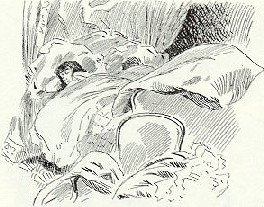
Excerpts from: Godey'sLady's Book, the January and February 1872 issues.
These ideas from 19th Century experts will bring a smile to your face, with gratitude inyour heart, that these are days gone by. Not all advice from the past isinapplicable to today. You will find some useful methods for dealing with theravages of moths and mildew on your textiles.
Household Linens
Well-mended linen is always creditable, and may last a long time for generalpurposes; but, as a certain stock must be kept up, it is as well to have achoice of new. Some ladies, who pride themselves on their good management ofhousehold linen, add every year a certain number of each article to their store.Thus, for an ordinary family, two tablecloths, four table napkins, six towels,one or two pairs of sheets, six pillow-cases, six dusters, the same number ofglass cloths, and other things in proportion, are a regular addition to theirstock. By so doing the expense of replacement is renderedcomparatively easy, and plenty of sound linen can be relied upon at times ofpressure. The additions thus made should be used in their turn, by being placedin the closet in the order alluded to above. It is hardly possible to set toomuch value on the use of old linen for an infinity of purposes to which newwould not be equally well suited. Still, pains should be taken to prevent linenfalling into rags until the utmost wear has been exacted. This brings us toconsider the all-important matter of making repairs.
Re-using Household Linens
Beginning with sheets. Directly the middle of a sheet begins to feel at all thinner thanthe other parts, it is time to "turn" it. This is done by simplycutting the sheet in half and sewing together the outside selvages. Thenewly-made seam will then be the middle of the sheet. The sheet, if not muchworn, will require no further alteration for a long time. If, however, the wearhas been considerable, side pieces should be let in to the extent, and severalinches beyond, the worn places. The sides must then be hemmed or sewn in theordinary way. When, after a time, the "turned" sheet wears thin in thecentre, instead of patching it, as some people are apt to do, it is better tosew the ends together, making the ends of the sheets now the middle. Or, ifthere be any children's beds to furnish with sheets, the sound ends and cornersof a good-sized pair of sheets make capital cot sheets, and are more serviceablefor nursery purposes than any other kinds. Old linen sheets are generally softin wear, and admit of being washed more easily from stains than new. The samemethod of turning pillow-cases may be observed. To be profitable, they should beturned before the threads break into holes.
When table-linen requires constantdarning, it is time to change its use from the table to the sideboard. For allgeneral purposes, old tablecloths are good enough for the above use. The cornersand ends make useful tray-cloths, and small, sound pieces may be picked out ofalmost all old table-linen for dishing-cloths, that is, cloths folded in smallsquares to place beneath pastry and pie-dishes, or to wrap round a Stiltoncheese or pudding-basin, and numberless other purposes where old damask may beused instead of new. When quite reduced to rags, old damask should be washed andmangled with the same care as new, and set aside in the linen-closet for use inthe sick-room. If any sound selvages be left, pieces of from three to fourinches broad should be cut off, and smoothly herring-boned together in lengthsof from one to three yards, and afterwards rolled up neatly for surgicalbandages. It may not be often that such accidents occur as to requiresimilar appliances, but the head of a household should be prepared to meetdemands of the kind, and by so doing her readiness may save life or limb.
The remains of coarse huckaback toweling are excellent for use as plate-rags.Torn muslin curtains are not so generally convertible; at the same time, if oldmuslin be cleaned from starch, it is useful for poultices, and some should,therefore, be at hand in the linen-closet. Pieces of muslin, also, are oftenrequired by the cook for tying up herbs and spices, when making soups, gravies,etc., and as these are generally thrown away when removed from the stewpan, oldmuslin answers as well as new. In repairing muslin, it is necessary to have allthe starch previously washed out.
Quilts are generally darned when needing repair. Large old quilts may beadvantageously cut up for small beds. Light marcella quilts are to berecommended in preference to other kinds. In converting old quilts , the hemsshould be herring-boned with coarse darning cotton.
Marking Household Linens
All household linen should be marked with the nameor joint initials of the owners. The date of the year in which linen was addedto the stock should be marked above the name, and the number of the articlesconstituting the set underneath. If a set consist of six articles, the figure 6should be inscribed in preference to running numbers. All articles making theset should be of the same size and pattern. Sets of linen reserved for certainuses should be described accordingly.
Arranging the Linen Closet
The first requisite is a closet, or press, inwhich to store linen. With a little management, most houses, even the leastconsiderately planned, may be made to afford the desired space. If it shouldhappen that any choice in the matter exists, a linen-closet should be contrivedagainst a wall in goes here. connection with a chimney where a fire isdaily burning. Any apartment of which the wall is built against the flues of akitchen fire is the best for the desired purpose. The gentle warmth which thebricks retain is the best means of preserving linen from mildew, so troublesometo prevent in damp situations. The worst place for a linen-closet is, for thesame reason, against an outside wall, especially if the wall be exposed to asouth-westerly aspect, or shaded by trees . . . At the end of summer, a goodmanager puts away her best white quilts, muslin curtains,thick blankets, and the light cotton and linen garments of her children . . . Nolinen or muslin articles should be placed in the linen-closet, if they belikely to remain there any length of time, without the starch having beenpreviously removed, and the things "rough dried." The airing of sheetsand counterpanes especially should be thorough, and, if possible, they should beput away straight from the fire. It is owing to the imperfect manner in whichsuch work is usually performed that mildew so constantly affects linen.
When articles are put away from the wash, those of the past week's washingshould be placed at the bottom of the pile to which they belong, and not laid onthe top. By this means the same articles are kept in wear in turn, and therebyeven a limited stock may be made to last longer without extensive renewal, thanwhen only two or three things are in constant use. Articles that are reservedfor use on special occasions should be kept apart from the rest. Inside the doorof the linen-closet, or press, should be pasted a list of all the linen kept inthe closet. If the family be large, and the beds numerous, the order in whichthe sheets should be changed should be noted in a separate list. It is hardlypossible for the head of a family to bear all these details in mind without suchassistance, and the comfort of her household depends largely on the amount ofregularity that is observed in such matters.
Mildew Removal
It is very difficult to remove mildew when it has taken firmhold of linen. The following compound is sometimes found successful: Take equalparts of soft soap and powdered starch, and half the quantity of table-salt, addas much lemon-juice as will convert the ingredients into a thick paste, coverthe spots with the mixture, and leave the linen exposed in the open air till themildew is removed. As a preventive of mildew after dampweather, the linen-closet should be occasionally opened, and free air sufferedto circulate in it through an open window. The contents of the closet shouldalso be aired before a good fire, or in the sun.
Natural Moth Repellents
Next to mildew, moth is the most troublesome matterto deal with connected with the preservation of woollen stores. Numberlessremedies are recommended for the prevention of moth in woollens and furs. Spicesof all kinds pepper, camphor, turpentine, and of late, paraffine have beenamongst the most often-tried remedies. Each and all may occasionally have provedsuccessful, inasmuch as moths particularly dislike strong odors of any kind, andrarely attack scented materials in preference to those which are devoid ofsmell. The only true preventative of moth, however, lies in the use of alum. The keeper of some large and valuable woollen and fur storeslately informed the writer that no means are equally efficacious in preventingthe attack of moth as the application of finely-powdered alum to all articleswhich do not admit of being saturated, and by soaking those articles which donot suffer by immersion in a solution of alum and water. With regard to thetreatment of furs, it is not sufficient to dust the powdered alum on thesurface; it should be well worked in at the roots of the hair, the portionnearest the skin being the parwhich moths begin first to devour. Colored woollenmaterials require the same kind of treatment. There is one exception in favor ofred cloth. It is not within the experience of the gentleman mentioned that mothsdestroy red-dyed woollens. This probably arises from the circumstance that alumis used in the process of dyeing red. All shades of gray, on the contrary, areparticularly enticing to moths, and require especial care to preserve. Whitewoollens and blankets may be safely left, even in exposed places, if, afterhaving been washed, they are dipped in a solution of alum and water.
|

Collecting More Household Linens by Frances Johnson
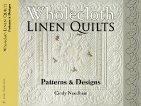
Wholecloth Linen Quilts: Patterns & Designs (Golden Threads) by Cindy Needham
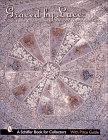
Graced by Lace: A Guide for Collectors of Antique Linen and Lace by Debra Bonito, 208 p. 388 color photos
Eight chapters: Lace Trim, Bridal Hankies, Fashion, Society Embroidery, Appenzell-work, Bed Linens, Table Linens, and Miscellaneous Lace and/or Embroidered Pieces. Each chapter has an overview, detailed descriptions, and photographs, including details that are excellent references for identifying various styles of lace and embroidery. The price range associated with each will help the reader understand the effects that age, condition, and workmanship have on value. This book will appeal to beginners and experienced collectors alike.

Guide to Lace and Linens
by Elizabeth M. Kurella

20th Century Linens and Lace, a Guide to Identification, Care and Prices of Household Linens
by Elizabeth Scofield
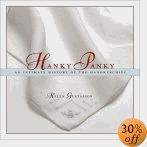
Hanky Panky: An Intimate History of the Handkerchief
by Helen Gustafson, 176 p.
In earlier times, handkerchiefs were an 'indispensable part of every woman’s wardrobe and toilette'. In this book, the unique history of the handkerchief in America is brought to life by the storytelling talent of Helen Gustafson and is presented in a combination of memoir and social history. The book contains marvelous illustrations, as well as gossip about icons such as Marlene Dietrich, Joan Crawford, and Jackie Kennedy. You'll find full-color illustrations of 100+ unusual handkerchiefs from the author’s large collection. This includes rare commemorative handkerchiefs that have never been seen in one collection.

The Book of Fine Linen
by FranCoise de Bonneville
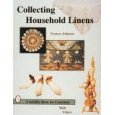
Collecting Household Linens
by Frances Johnson (Paperback - Jan 1, 2000)
|